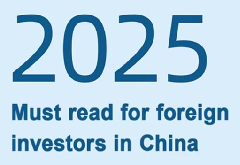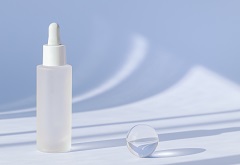Policy interpretation of the NMPA Announcement on Measures to Optimize the Management of Safety Assessment of Cosmetics
I. What is the purpose of drafting the NMPA Announcement on Measures to Optimize the Management of Safety Assessment of Cosmetics (“the Announcement”)?
The Regulations on Supervision and Administration of Cosmetics (“the Regulations”) specifically introduce a safety assessment system. The Regulations stipulate that before registration or filing of new cosmetic ingredients or cosmetics, the applicant for registration and the filing person shall make a safety assessment themselves or entrust a professional agency with such assessment. In order to implement the relevant provisions of the Regulations, the National Medical Products Administration (NMPA) has formulated and issued the Technical Guidelines for Cosmetic Safety Assessment (2021 edition) to guide the industry to carry out safety assessment.
Generally speaking, the implementation of the cosmetics safety assessment system has significantly improved the safety assessment awareness and capabilities of cosmetics enterprises, thereby enhancing the overall safety level of cosmetics and contributing to the high-quality development of the cosmetics industry. At the same time, the NMPA focuses on the effects of the system's implementation, and pays attention to the difficulties and challenges reported by enterprises, such as the lack of assessment data, the absence of detailed rules for the application of assessment technology, and the need to strengthen team building of domestic safety assessment personnel. To guide and assist enterprises to carry out cosmetic safety assessment and effectively solve the problems and difficulties of cosmetic enterprises in carrying out safety assessment, the NMPA organized the drafting of the Announcement, and strives to improve the operability of industry safety assessment and the availability of raw material data under the premise of not reducing safety standards.
II. What is the main content of the Announcement?
The Announcement is divided into two parts — the main text and the annex. The main text covers two aspects. First, it stipulates the classified management of safety assessment data, and specifies that for qualified ordinary cosmetics, enterprises can submit basic safety assessment conclusions, with the safety assessment report archived by them for future reference. Second, considering the long research and development (R&D) cycle of cosmetics and to avoid repeated investment in R&D, a one-year transitional period is set for products that have undergone assessment in accordance with the original requirements.
The annex to the Announcement, the Measures to Optimize the Management of Safety Assessment of Cosmetics, mainly involves strengthening technical guidance, integrating raw material data resources, innovating the assessment report management mechanism, and promoting the construction of the safety assessment system. Its highlights are as follows:
1. Developing technical guidelines to enhance enterprise assessment capabilities
First, the Measures stipulate the formulation of technical guidelines, such as the read-across and the threshold of toxicological concern, to help solve the safety assessment issues of raw materials with significant safety data gaps such as plant extracts and fermentation raw materials. Second, they stipulate the formulation of three technical guidelines related to testing on stability, preservative challenges, and package material compatibility. They also specify that enterprises can carry out research through self-developed methods and submit only testing or assessment conclusions, providing them with sufficient operational flexibility.
2. Integrating raw material data resources to fill the gaps of raw material data
The Measures clarify the necessity to fill the gaps of raw material data by collecting, sorting and releasing international authoritative cosmetic safety assessment data and the raw material information of products that are included in the registration and filing system and already on the market, as well as by accepting the historical data of raw material provided by enterprises. They will also lay the foundation for the establishment of China's raw material database in the future. Meanwhile, they set out the plan for formulating the Guidelines for the Use of Cosmetics Raw Material Data to guide enterprises in the standardized and rational utilization of relevant data, especially the three-year use history and safe consumption history data of the raw materials of enterprises.
3. Implementing classified management for the submission of safety assessment data to enhance regulatory efficiency
In order to improve the efficiency of registration and filing work and facilitate product marketing, it is necessary to implement classified management for the submission of safety assessment data based on the level of product risks. For products with higher risks, such as children's cosmetics and freckle whitening cosmetics, enterprises are required to continue to submit a complete safety assessment report. For products with lower risks, the enterprise can submit the basic conclusion of safety assessment, with the safety assessment report kept on file by the enterprise itself for future reference. In addition, it is clarified that in cases where there is a lack of safety assessment data for a small amount of raw materials, enterprises can supplement by conducting final product safety testing, with the conclusions included as part of the product safety evaluation, along with the safety assessment report.
4. Making long-term plans to promote the construction of a safety assessment system
The Measures incorporate a layout plan on basic construction of safety assessment, the implementation of enterprise management throughout the product lifecycle, safety assessment discipline development and talent training, as well as exchanges and technical cooperation in safety assessment, so as to improve China's cosmetic safety assessment system.
III. Why establishing a classification system for the submission of safety assessment reports is crucial?
Cosmetics safety assessment is an important way for cosmetic registrants and filing persons to fulfill their main responsibilities for ensuring product quality and safety. Enterprises should conduct safety assessments based on the product and quality management system. Safety assessment requires strong scientific and professional expertise. The adoption of a classified management model is mainly considered from three aspects. First, it highlights the main responsibility of enterprises and guides them to improve their safety assessment system, which neither exempts enterprises from the responsibility of safety assessment nor reduces product safety requirements. Second, it improves the efficiency of supervision, focusing limited regulatory resources on the supervision of higher-risk products. The regulatory authorities will deal with any problems found in the inspection of enterprises in accordance with the law. Third, the classification system encompasses international experiences, including those of the European Union, in the management of safety assessment data, and is also in line with the current development of the domestic industry.



